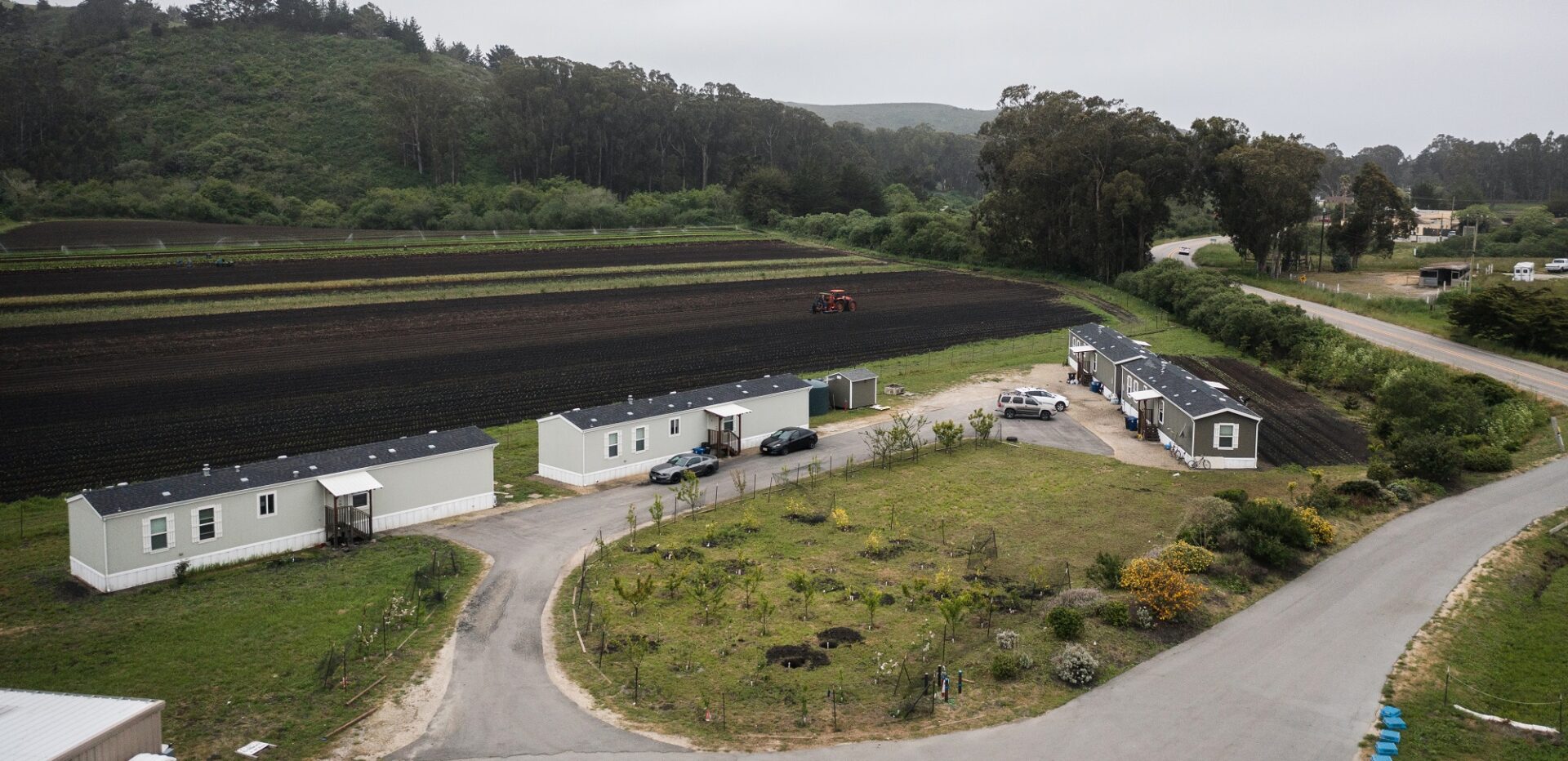
What are the challenges and opportunities for building new farmworker housing in our region? Green Foothills helped present a panel discussion last week on this important topic. The panel experts called on community members to help raise awareness and speak up in favor of better housing for farmworkers.
In the wake of the tragic mass shooting of seven farmworkers in Half Moon Bay in February, public attention turned to the deplorable living conditions endured by many farmworkers and the dire need for additional farmworker housing. This panel discussion, hosted by the Food System Alliances of San Mateo and Santa Clara Counties, provided a snapshot of some of the efforts that are being made to address these issues.
California’s Farmworkers by the Numbers
Statewide, California employs about 400,000 farmworkers, of whom 92% are Latinx and 77% were born outside the U.S. and are noncitizens. 78% do not have a high school diploma. The median personal income for California farmworkers is $17,500, which is less than 60% of the average annual wage of full-time workers in California. Meanwhile, farmworker labor supports California’s $50 billion agricultural economy, which results in $16.2 billion of income to farm owners.
Efforts on the San Mateo County Coast
There is a need for an estimated 1,000-1,140 additional farmworker housing units on the San Mateo County coast, according to Hyun-mi Kim, Director of Community Engagement and Public Policy at Puente de la Costa Sur, who works directly with San Mateo County’s farmworkers. She pointed out that in Pescadero, the county’s primary agricultural community, farmworkers have no access to clean water, nowhere to do laundry, no broadband internet, and no access to public transit. One-third or more of farmworkers on the southern San Mateo County coast live in employer-provided housing, which makes farmworkers doubly vulnerable to losing both their income and their housing situation.
One organization working to increase the amount of farmworker housing on the San Mateo County coast is the Peninsula Open Space Trust (POST). POST’s farmland protection program acquires farmland, invests in infrastructure and land restoration, and then transfers it to farmers subject to agricultural easements. Laura O’Leary, Senior Farmland Project Manager with POST, explained that the infrastructure that POST’s farmer tenants need is housing. Thanks to a forgivable loan program from San Mateo County, POST has been able to build three farmworker housing projects on the coast for a total of 22 bedrooms, and is in the process of completing a fourth project that will add eight more bedrooms.
Santa Clara County: Building Farmworker Housing in Urban Areas
In Santa Clara County, the Board of Supervisors voted in 2020 to streamline the permitting process for farmworker housing. However, other barriers remain. For example, many farms are located in rural areas without urban services, which makes it expensive and difficult to provide drinking water and wastewater treatment to new housing developments. There has been greater success in designating certain affordable housing units within urban multifamily developments as farmworker housing, according to Patrick McGarrity, Policy & Budget Director for Santa Clara County Supervisor Sylvia Arenas. Two affordable housing projects in Morgan Hill will, when completed, provide 58 new units of farmworker housing, and the County is exploring the possibility of constructing additional farmworker housing on County-owned land within urban areas.
How Can You Help?
All three experts on the panel agreed that community members can help raise awareness of this issue by speaking up to support farmworker housing proposals. For example, new projects are being planned on the San Mateo County coast, where the city of Half Moon Bay is proposing 40 units of farmworker housing on a city-owned site near downtown, and Santa Clara County plans to explore the possibility of building housing on County-owned sites in Gilroy and San Martin.
Green Foothills will be monitoring these efforts and will alert our supporters to opportunities to speak up in support of providing much-needed housing for our local farmworkers.

Leave a Reply